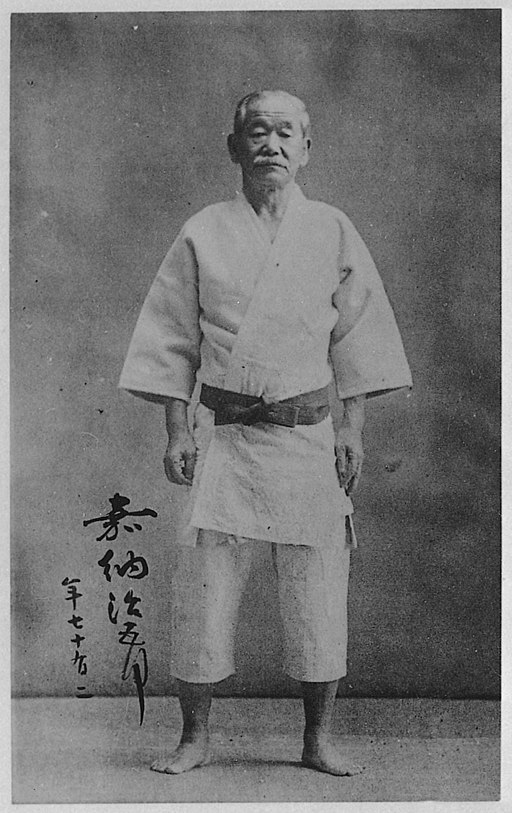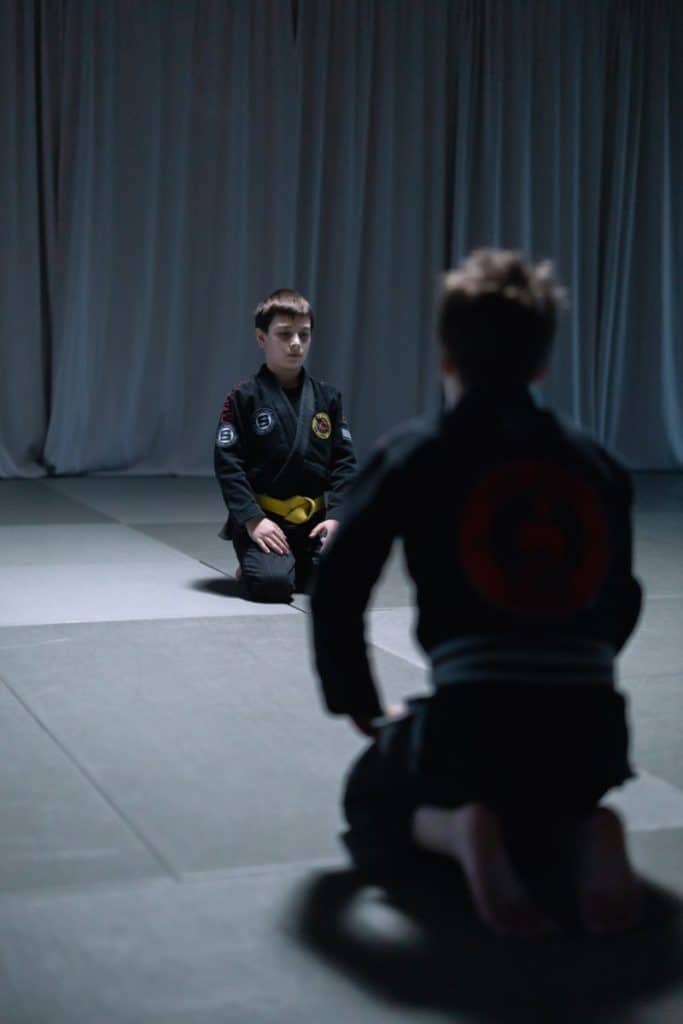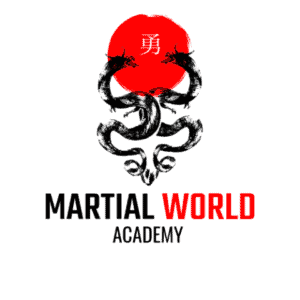Questions like these are always a good sign. They usually come about when someone is looking to start taking lessons, or (more commonly in my case) when an opponent from that style landed something impressive on and you wanted to understand how and why it worked so well. In this article we’ll be exploring how Judo works and why the “Gentle Way” can be so brutally effective.
As a rule, Judo works, as a sport and as self defense, because it does not rely on your power, but your opponent’s power. By taking advantage of your opponent’s momentum, balance, or size, a smaller Judoka can defeat a larger opponent. Judo has cultivated this power through its training methods and its philosophy.
With the quick and dirty out of the way, let’s dig a bit deeper and understand the theory behind Judo that gives its strength.
How Was Judo Developed
In order to understand the present, we must have a proper grip upon the past. This is doubly true for Judo because its history is directly tied to why it is so effective.

Judo was founded by Jigoro Kano in 1882. But, as with all human developments, it did not spring forth from his mind, complete in its present form. No, it was created over time. And that process began when he was a skinny teenager getting bullied at school. And like most skinny teens, the first thing he did was seek out a martial arts sensei in order to gain strength and stop his bullies.
Unfortunately for Kano, this was the era of the Meiji Restoration, a time of rapid Westernization for Japan where things like martial arts had fallen into disfavor. In fact, many looked at martial arts training not as a worthy pursuit of discipline, but as thug-like behavior. So true was this that it took him several years to find a Jujutsu sensei who would agree to teach him. But once he was accepted, he threw himself wholeheartedly into his training.
His experience led to one of his prime frustrations, though. His dojo, perhaps in an attempt to distance itself from the perception of “thugishness”, heavily stressed kata over sparring. Regardless, Kano trained diligently and, in time, became his dojo’s most able student.
What is the Philosophy of Judo
In war, training is dictated by military doctrine. In martial arts, it is dictated by philosophy. Confucianism was imbued in much of Kano’s Jujutsu training, as was the sense of harmony. As such, when developing Judo, Kano incorporated these concepts into not only the combative doctrine, but instituted a moral expectation to both his students and anyone who would teach Judo as well.
One of the first principles of Judo, and one of its secrets, is “Seiryoku Zenyo” (maximum efficiency). The belief here is that one should not use much energy, mentally or physically, when attempting to engage an opponent. Instead they should take advantage of their opponent’s energy and strength and use that to defeat them.
Story Time
Being the only member of my family with an interest in martial arts, I’ve taken it upon myself to introduce it to my nieces. Given that my background is primarily in Kyokushin Karate, this forms the basis of what I was teaching her. One day my oldest niece, who was 11 at the time, grew frustrated that none of the techniques she tried on me was working. “I can’t win! You’re too big!” she complained. It was here that I attempted to explain Seiryoku Zenyo, but in truth, I made very little headway. My failing’s as a teacher, I’m certain. And I’ll admit, I was starting to feel a bit frustrated, too. How was I supposed to teach her this foundational principle? She was too frustrated in that moment to want to learn a throw that could work on me and if I threw her myself, she would only see that as me using my adult strength. Then I remembered that Nickelodeon had done that work for me with one of her favorite programs. I fished my phone out of my bag and pulled up this clip.
Here Aang, the little bald guy, quickly figures out that the strength of this structure is centered around it’s rigidity and it’s mass. And instead of wasting their energy in cutting through each steel brace, they simply weaken it and allow its strength to become its downfall.
My niece loved this show and, while she is a long way from beating her dear old uncle, she got the concept and that’s the win I was going for. Since then, when we train,she’s developed the habit of trying to attack my knees to make my larger size become my achilles heel. (Honestly, I couldn’t be prouder, even if I do end up feeling all her knee-kicks the next day.)
This principle may be the primary reason Judo is so effective. By not relying on one’s own strength, by using the strength and energy of one’s opponent, and by quickly occupying his center of gravity by means of a throw, even a much smaller person can defeat a larger one.
The next principle is “Jita Kyoei” (mutual benefit and prosperity). It was Kano’s fervent belief that human happiness and prosperity could only be attained when people abandoned selfish desires and acted in accordance with the benefit of their neighbors. This principle when translated into Judo training gives rise to a cooperative dojo environment; where senior students work to help train junior students for their benefit and the benefit of the dojo. And by helping a junior student grow, they themselves prosper by having a more able sparring partner.
The third principle is “Kyoiku no koto” (education is the greatest thing in the world). A principle to be expected of a man who was called the “Father of Japanese physical education”. Kano proposed that because, in the end, we all meet the same fate, it is imperative that we grow the body of human knowledge and pass that to the next generation. He stated that an individual’s wealth can be lost in but a generation after his death, but the knowledge he accumulated and passed on could benefit all of society for a hundred generations.
One way that this principle has been expressed in Judo has been its welcoming of new techniques and incorporating competitive strategies from other cultures, after Judo became an international sport. And by seeking to incorporate new and effective methods Judo is strengthened, in the same way that steel is formed when iron incorporates carbon.
What are the Basic Rules of Judo

There are no strikes in Judo. Rather, you win by use of throws, pins, joint locks, strangulation, and submissions. If a match is not won by ippon or submission it is usually determined by who accumulated the most points. Certain techniques or actions are prohibited and will result in a penalty. Such as attacking any joint other than the elbow, touching an opponent’s face in any way, or deliberately injuring an opponent. Repeated penalties can lose a Judoka his match.
How do you score points in Judo:
- Ippon – Full point. Scoring an ippon wins the match instantly.
- Waza ari – Half point. Two waza ari equals one ippon and wins.
- Yuko – Lesser point.
- Pinning – both shoulders down for 20 seconds is a win. 10-19 seconds counts as a yuko.
- Submission – Winning can also be achieved by submitting your opponent.
- Shido – A minor penalty. Judges may award a yuko to the opponent if a Judoka commits more than one shido infraction.
- Hansoku – A major penalty. Judges may award an ippon to the opponent if a Judoka commits more than one hansoku infraction.
The best way of winning a Judo match is by scoring an ippon, whether by submission, a throw, or pinning an opponent. Many international matches, however, are won by yuko. This has been a trend since Judo was brought to nations with their own strong cultural roots in wrestling.
How do Judo Competitions Work
Judo competition, in general, is divided by weight, age, gender, and experience. On the mat one Judoka will wear white while the other is garbed in blue. This helps in quickly differentiating each competitor for the judges and the spectators.
The arena is typically 14m x 14m with the “ring” (a square) being 10m x 10m. Rounds last for 5 minutes for international competitions.

Carrying forth the principles of Judo (and Japanese social custom) there is a degree of etiquette and sportsmanship that is expected from each Judoka at all times. Bowing before entering the ring, to one’s opponent, to the judges, and to the referee, are all expected and enforced. As is maintaining one’s composure whether in victory or defeat. Breaches of etiquette can result in penalties up to and including disqualification.
Scoring is decided by the three judges and the victory, if not unanimous, is decided by a majority vote. If the score is even by the end of the match, there is another match called the “Golden Score” where the first player to score any point, big or small, will be declared the winner. This is similar to “sudden death” in Western games.
Why is Judo so Effective?
Philosophy of Movement
When your opponent moves in, you yield. By yielding you can occupy his center of gravity. Occupying his center allows you to use his weight or his momentum against him. This, except when in a competitive setting, is best achieved through the use of a natural standing position. Allowing you to respond no matter how your opponent decides to attack you.
Let’s look at a a beautiful example of these principles when applied under the highest stakes…
You can see an “uchi–mata” being utilized against a machete wielding madman. When you rewatch the video you can pick up on many subtle details. Firstly, he approaches his attacker from a neutral standing position, able to respond to the machete attack no matter which angle it came from. Secondly, when the criminal initiates his attack, the officer moves in quickly to receive it, occupies his attackers center, and uses his momentum to slam him to the pavement. Finally, he sweeps the man’s arm into a shoulder lock and allows his fellow officers to aid him in the arrest, thus ending the murderous threat while preserving his attacker’s life.
Training Methodology
Judoka train how they fight, which gives them combat experience in a safe environment. By emphasizing throws and submissions over strikes, you can utilize nearly every technique you know, even if you are wearing confining clothing or, in the case of police, a tool belt. “Randori” (Judo sparring) is always done against a resisting opponent, which allows you to learn timing, distance, and feints.
While it is clear that in this demonstration the “uke” (translated as: one who receives, or, the poor guy getting slammed) is cooperating rather than resisting, it is easy to see that these techniques are fully applicable to a motivated and resisting opponent. The key reason for this is that their training is centered on application of techniques, rather than pretty theories that cannot be safely tested and trained. Here you have a highlights reel of these techniques in action.
As you watch, something that will likely stand out is that each judoka rolls with his opponent when he goes down with a throw. This is the principle of gentleness that gives Judo its name. Rather than resisting the momentum, they flow with it, and by doing so, in many instances, have the option of adding their own body weight to their opponent, thus doubling the impact.
Final Round
As a whole, Judo’s philosophy and training methodology is what grants it such power. By not meeting strength with strength, by yielding, and by attacking not an opponent, but his center of gravity, Judo allows even the small and physically weak to defeat a much stronger, even armed, opponent.
Judo’s history, and its core principles, even after Kano’s death in 1938, has kept the art alive and evolving, allowing it to incorporate new techniques and new training methods. This flexibility, coupled with the adherence modern Judoka have to the philosophical principles Kano laid down, has only add to the power, finesse, and grace of the “Gentle Way”.
Attribution:
- https://pixabay.com/photos/traffic-light-signal-traffic-street-876056/
- Photo by cottonbro from Pexels
- Kremlin.ru, CC BY 3.0 https://creativecommons.org/licenses/by/3.0, via Wikimedia Commons
- Unknown authorUnknown author, Public domain, via Wikimedia Commons
